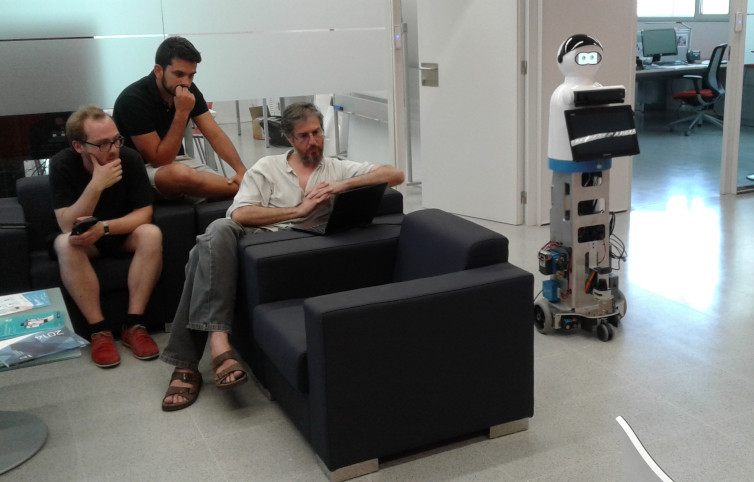Computer Vision
What is computer vision?
Computer vision or also known as artificial vision is a series of tools and processes that obtain, process and analyze images of the real world for their subsequent treatment in a computer.
Computer vision is the subcategory of artificial intelligence (AI) that focuses on building and using digital systems to process, analyze, and interpret visual data.
How does computer vision work?
Computer vision works in three basic steps when treating an image:
- Acquisition
-
Images are acquired in real time through video, photos, or 3D technology for later analysis.
-
- Processed
-
The learning models automate much of this process, but they are also trained by adding thousands of labeled images.
-
- Identification
-
The final step interprets, identifies, or classifies an object.
-
Algorithms based on computer vision
In October 2015, INLOC was selected as a partner of ARNICA, a FP7-funded project dealing with robotic support for geriatric assessment.

Computer Vision
You can find more information on the ECHORD ++ home page or by contacting us directly, where we will help you with your questions or projects you have in hand.
Our main role in this project on robotic support to geriatric assessment was the implementation of computer vision-based algorithms to help clinicians establish a proper assessment of the elderly.
Medical data is one of the most important sources of information so clinicians don’t spend hours manually analyzing patient data. The healthcare industry has been quick to embrace new automation solutions, including computer vision.
What are your most common uses of computer vision?
- Feeding:
Artificial vision is a clear example of its use in quality control, preparation and selection of food products, where computer vision systems supervise the development of products in all their phases.
- Traffic:
Monitoring and estimation of traffic flow based on drones and cameras has also been made possible by advances in the field of machine vision.
- Text and barcode reading
Since most products have barcodes, a computer vision technique called OCR can be successfully applied to automatically detect, verify, convert, and translate barcodes into readable text.
This procedure helps identify mislabeled products, provides information on expiration dates, reports the number of products in the magazine, and tracks packages at all stages of product development.
- Medicine
When taking X-rays and their techniques to detect malignant tumors.
- Building
The construction industry is rapidly adopting machine vision technology and leveraging it for infrastructure inspection, job site hazard detection, or predictive maintenance.
- Farming
The agricultural sector has witnessed artificial intelligence models in areas such as crop and yield monitoring, automated harvesting, analysis of weather conditions, monitoring of livestock or detection of plant diseases.
- And many others
And many other sectors and areas we find applications where computer vision is applied such as insect detection, inventory scanning for automatic replenishment of products in stores, analyzing camera images to detect suspicious activities and alert staff, pedestrian traffic, …
As you may have deduced, the advantages of computer vision are many and stand out when it comes to verifying, measuring, detecting, capturing movements, security, recognition, etc…
